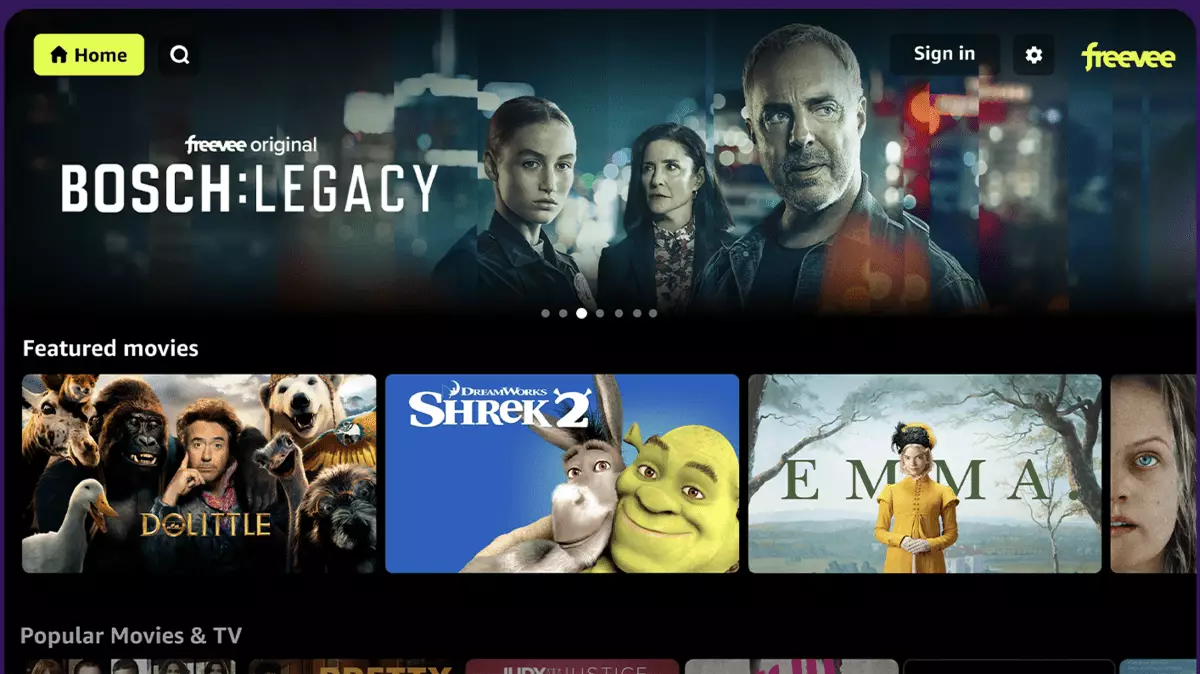Amazon’s decision to shutter its standalone Freevee app marks a pivotal moment in the streaming ecosystem, reflecting a broader industry trend toward consolidation and simplification. Originally launched as IMDb TV in 2019 and rebranded as Freevee in 2022, the service was Amazon’s attempt to carve out a space in the fiercely competitive ad-supported streaming market. However, as Amazon announces its plan to integrate Freevee into Prime Video by August 2025, it underscores a strategic shift aimed at strengthening its core offering. This move suggests that Amazon recognizes the increasing importance of a unified content platform where users can access both paid and free content seamlessly, rather than dispersing its resources across multiple apps.
This strategic realignment isn’t merely about operational efficiency; it signals a wider industry understanding that consumer fatigue from managing multiple streaming apps has become a significant barrier. With the proliferation of options, users are overwhelmed, and consolidating content offers a clearer, more user-friendly experience. Amazon’s approach demonstrates confidence in Prime Video’s ability to host a diverse content library that can ultimately serve both paying subscribers and free viewers without fragmenting its audience.
The Power of Free Content in the Streaming Era
Recent Nielsen data revealed that streaming overtook traditional TV in the United States, highlighting the shift in viewer preferences toward on-demand, accessible content. Freevee’s existence within Amazon’s ecosystem has been a vital component of this transition, providing a substantial library of ad-supported shows and movies that attract a broad audience. While Freevee offered popular originals like “Jury Duty” and “Bosch: Legacy,” its core strength was always in its ease of access and free availability, which helped attract casual viewers who might not want a subscription but still crave quality entertainment.
By embedding Freevee’s content into Prime Video, Amazon capitalizes on this trend without sacrificing the value of free, accessible entertainment. It aligns with consumer expectations that entertainment should be flexible and convenient, not constrained by multiple apps or subscriptions. Amazon’s move suggests that free streaming content will continue to play an integral role in attracting and retaining viewers, especially those hesitant to commit financially. Prime Video’s “Watch for Free” section effectively becomes a catch-all hub that caters to both subscription-based and ad-supported audiences, thereby expanding the platform’s reach and influence.
Implications for the Future of Streaming Platforms
Amazon’s consolidation strategy is a calculated risk that could reshape how streaming services operate. Instead of splitting focus between an independent app and its flagship platform, Amazon is betting on the strength of Prime Video as a comprehensive entertainment destination. This approach not only streamlines user experience but also consolidates viewership data, which can inform better content decisions and targeted advertising strategies.
Yet, such moves also carry certain risks. Segmenting audiences—those who prefer free content versus paid subscribers—may lead to content cannibalization or reduced visibility for Freevee’s original projects. Still, Amazon seems confident that its extensive library and diverse content offerings will serve both segments effectively, driving engagement and subscriptions simultaneously.
This unification could also influence industry competitors to reconsider their strategies. As more giants integrate free streaming content into their main platforms, the future of digital entertainment appears headed toward all-in-one solutions—a single app for all viewing needs. Amazon’s decision might prompt other players to follow suit, shifting the landscape from fragmented services to streamlined content ecosystems that prioritize simplicity, accessibility, and user experience.

